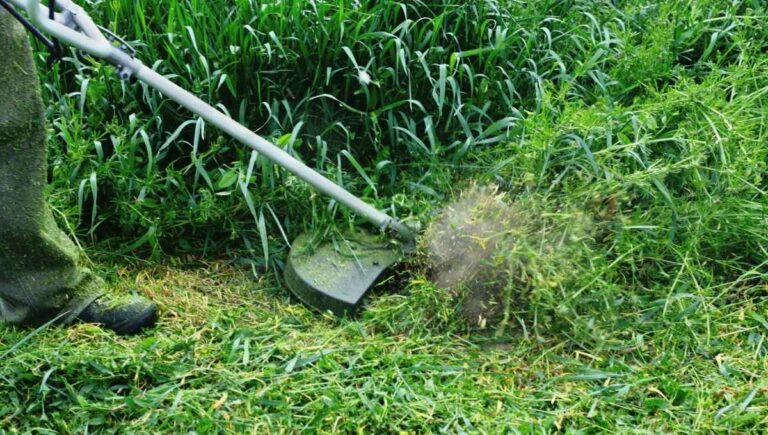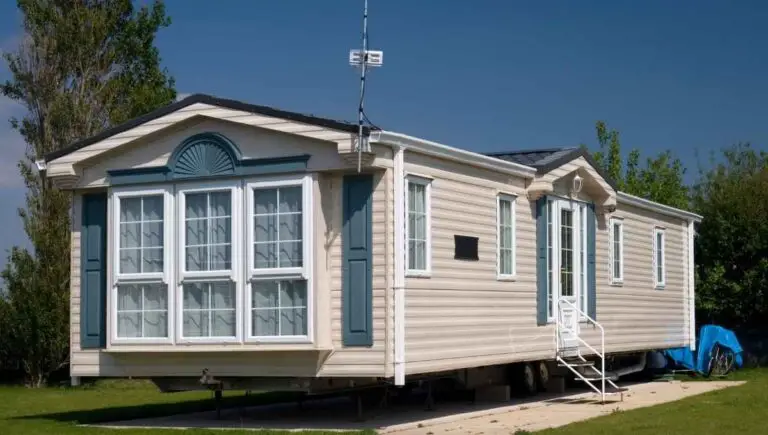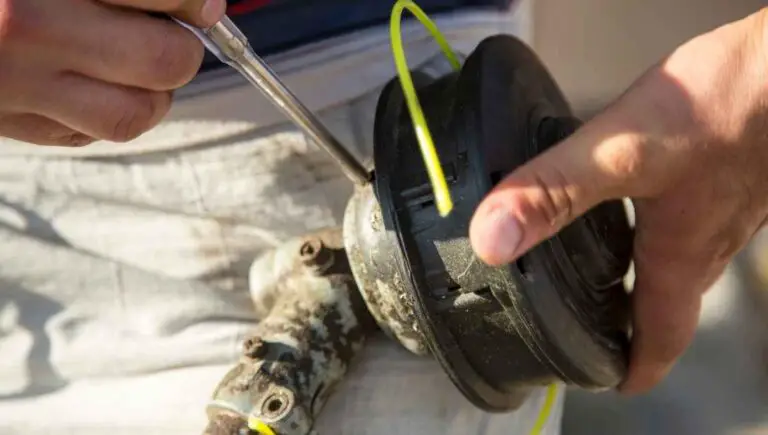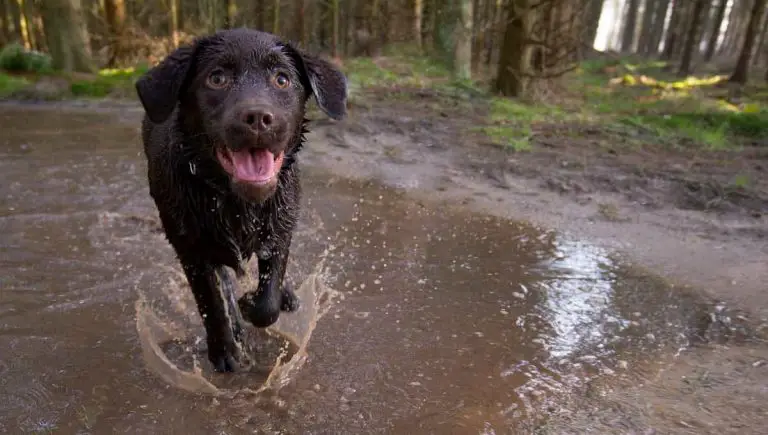Should You Knock Down Icicles? (The Safe Way to Do This)
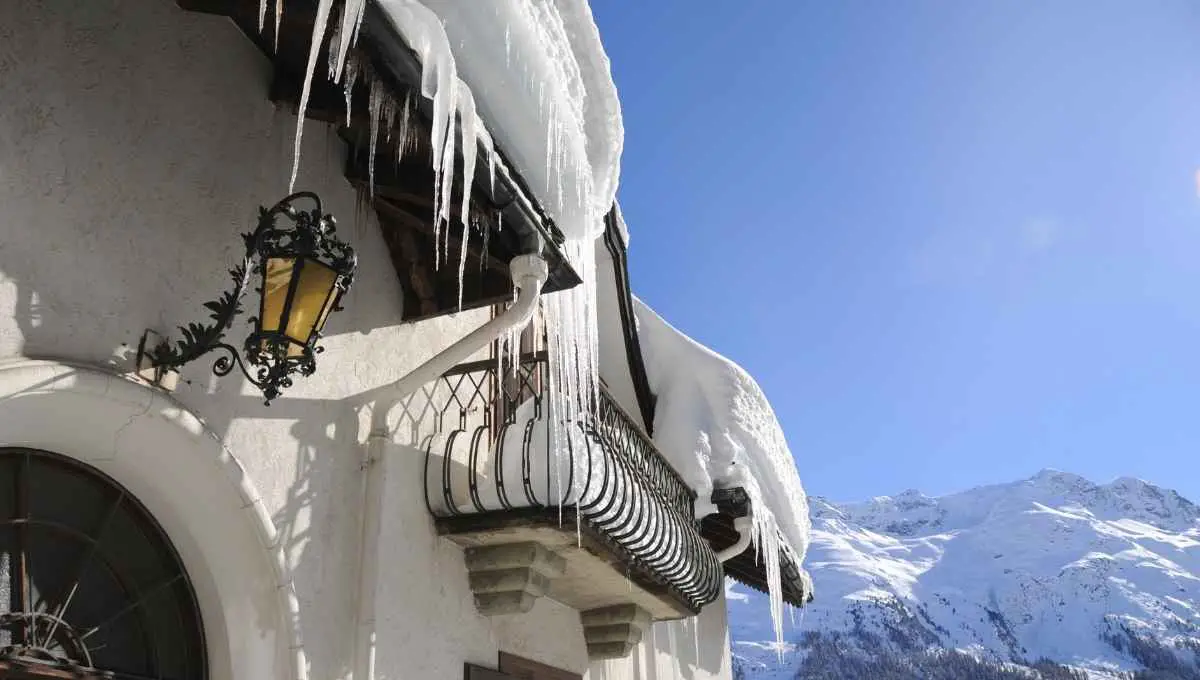
Sparkly little icicles can add a storybook charm to your house but when those cute icicles become larger, they can cause some serious harm. So, should you knock down icicles? Or simply leave them alone?
Smaller icicles are fine to knock down as long as you are wearing protective gear such as safety goggles and gloves. However, larger icicles should not be knocked down and instead melted, since their fall can be dangerous.
Yet, how are you supposed to know what is the safest way to remove icicles? We will let you know which types of icicles you should remove, how to remove them, and how you can prevent them from forming in the future.
This post contains affiliate links from Amazon and other stores. This means Yard Blogger may earn a commission if you make a purchase using any of our links. Please refer to our full affiliate disclosure policy for full details.
Here’s a Quick Pro Tip!
Although knowing the safest ways to remove icicles is important, knowing how to prevent icicles from forming in the first place is even better.
The most popular method to prevent icicles is using these Roof & Gutter De-icing Kit Heating Cables.
These protected electrical cords lay on top of your roof and in your gutters to melt any snow that lands on them!
Should You Knock Down Icicles or Leave Them?
It can be tricky to know whether or not you should knock down icicles as it can jeopardize your safety as they fall but the icicles may also cause damage to your house if you leave them. So what should you do?
Is It Better to Knock Down Icicles or Leave Them?
Small icicles do not pose a large threat and if you believe the weather is warming up and the icicles will melt on their own, then by all means leave them alone. However, if you have large icicles forming on your house, it is better to treat these.
Large icicles on your house can cause serious destruction if they get too big. They can cause your gutters to rip off your house, can create ice dams, and can cause leakage into your house.
When removing large icicles, consider your safety above everything else.
Should You Leave Icicles Alone?
Whether or not you should leave icicles alone depends on the size of the icicle. Small icicles don’t really pose a danger to anything since they will likely melt away anyways. However, larger icicles are what can cause a problem.
Larger icicles have the capability of seriously injuring someone, or a car, if they fall from a roof.
They can also create an unmanageable pull on your gutters causing them to slowly tear off your house which can introduce a number of additional problems.
Should I Break the Icicles off My House?
You can break small icicles off your house using a roof rake, work gloves, and safety goggles to protect yourself as the ice falls. You should not attempt to break off larger icicles as this is very dangerous.
Breaking off larger icicles is risky business and not recommended. The falling ice can easily hit you, or someone else, or pieces of ice can shatter and hit you once it falls to the ground.
For larger icicles, you should look into methods that melt the ice instead of breaking the ice.
Should I Knock Off Icicles by Myself?
If you take the proper precautions when it comes to knocking off icicles, such as wearing protective goggles and gloves (and even a hard hat if you want to) then you should be safe to knock off icicles by yourself.
However, if your icicle removal method involves climbing up a ladder then it’s best to have a buddy with you just in case you slip and fall.
If something does, unfortunately, happen to you, your buddy will be close by to call 911 or assist you themselves.
Are You Supposed to Break Icicles or Melt Them?
Whether or not you should break icicles or melt them depends on the size of the icicle. Smaller icicles are okay to break off since they don’t pose as much of a safety risk but larger icicles should be melted.
Larger icicles can cause some serious damage if they fall from a roof, so melting them slowly is the best approach. You can do this by using a calcium chloride melting solution or pouring hot water over the icicles.
You might also enjoy our post on How to Stop Icicles From Forming on Your Gutters or Roof
How to Safely Remove Icicles From Your House
Now that we have determined when you should remove icicles and when you should leave them alone, let’s look into the best ways to remove the icicles without putting your safety in danger.
How Do You Knock Down an Icicle?
To knock down an icicle, you should use a roof rake with an extending telescope handle. This allows enough room between you and the falling icicles so you minimize your chances of having pieces of ice hit you.
Before you start knocking down icicles, put on your safety goggles and gloves for protection from the sharp ice. Extend the roof rake as long as you can, putting a safe amount of distance between you and the falling ice.
Gently push the base of the icicle with the rake and look away as the ice falls. Continue this process until all the icicles are taken off. Remember to only use this method with small icicles.
How Do I Get Icicles off My Roof?
Removing large icicles from your roof requires more caution to be exercised. Simply hitting them with a pole or rake is dangerous and should be avoided. The best way is to use calcium chloride to melt the icicles away.
If you have icicles coming off your gutters, you likely have ice dams. To treat the ice dams, fill either pantyhose or several socks up with calcium chloride and lay them on top of the ice dam.
The calcium chloride will slowly melt away all the ice and the ice should flow out of your gutters.
What Is the Fastest Way to Get Rid of Icicles?
The fastest way to get rid of icicles is to knock them down with a pole or a rake. However this is not necessarily the safest way. It is perfectly fine to knock down smaller icicles but you shouldn’t knock down larger icicles.
Knocking down smaller icicles with a pole or rake to avoid larger ones from forming is perfectly fine since they’re not as dangerous given their lighter size.
But large icicles should not be knocked down regardless of how fast it takes.
You should plan to melt larger icicles with calcium chloride. This may not be the fastest option but it is the safest.
You don’t want to spoil your wintery day with a trip to the ER because an icicle fell on you, or worse, your whole gutter.
What Is the Safest Way to Remove Icicles?
For smaller icicles, the safest way to remove icicles is with a roof rake while wearing safety goggles and gloves. For larger icicles, the safest way to remove them is with an ice melting solution such as calcium chloride.
When looking for ice melt to treat your icicles with, ensure that the ice melt only contains calcium chloride. Calcium chloride is safe for shingles and vegetation as opposed to sodium chloride that can be damaging.
You might also enjoy our post on Do Snowblowers Take Regular Gas?
The Best Products to Remove Icicles
Knowing how to knock down icicles is the first step in taking care of them. Now that we have that covered, we need to know which products will help us do this the best.
Here are some products you can use to knock down icicles and ones you should avoid.
What to Use to Knock Down Icicles?
To knock down small icicles from your roof, since you should avoid knocking off large icicles, you can use an ice pick or a telescoping roof rake.
If you decide to use an ice pick, you should use a ladder to attack the icicles from their base so you are not standing under them when they fall.
Ice picks are a great option because they won’t damage your shingles.
A telescoping roof rake is another great option if you are scared of heights and don’t want to climb up a ladder. Since you will be standing below the icicles, but not directly below, make sure to wear safety goggles and gloves.
Extend the roof rake as long as you feel comfortable, giving enough space between the icicles and yourself. Gently press the rake to the base of the icicles to push them loose from your roof or gutter.
Should You Use a Hammer to Remove Icicles?
Using a hammer to remove icicles is effective but if you have to make sure you are using the right kind of hammer. Using the wrong one can end up damaging gutters and shattering your shingles.
Instead, you should use a rubber mallet, which is very similar to a hammer. The rubber mallet is strong and heavy enough to remove icicles but gentle enough to not damage your roof or shingles.
Should You Use a Roof Rake to Remove Icicles?
Roof rakes are a great way to remove icicles since it safely distances you from the falling icicles thanks to their telescoping arm while removing snow from your roof at the same time.
Raking off the snow from your roof is beneficial because it will expose your roof to sunlight which will raise the temperature of your roof. The warmer your roof is, the less likely icicles will form.
The Best Products to Prevent Icicles
Now that you have your roof cleared off and all the icicles have been removed, you now need to learn how to prevent icicles from forming in the first place so you don’t have to keep removing them in the future.
Icicle Prevention Products
Some of the best icicle prevention products are ones that keep the melted snow as water so it doesn’t have the chance to form into ice. These products can be in the form of electricity or a type of melting salt.
Heat tape, or also called ice melting heat cables, is one of the most popular options for preventing ice dams and icicles.
They lay on your roof and in your gutters and keep the melted ice warm enough through electricity to flow out of your gutter or off your roof.
Melting salt, such as calcium chloride is another great option and less expensive than heating cables.
The salt can be spread along your roof and into your gutters, preferably in a pantyhose or socks, which will cause the snow to slowly melt to water and wash away.
What Is Heat Tape?
Heat tape is a protected electrical cord that is placed in your gutters and along your roof in a zig-zag formation that prevents water from freezing and causing ice dams and icicles to form.
You should install your heat tape along your roof and in your gutters before the first snowfall since it is always more dangerous to go on your roof during the winter.
Regardless, heat tape is a very effective way to keep icicles from forming all winter round.
Calcium Chloride Socks to Remove Icicles
Filling up socks or pantyhose with calcium chloride is a cheap and effective way to remove icicles from your roof and gutters. The calcium chloride quickly melts the ice and the water flows away.
When using calcium chloride, make sure that is 100% calcium chloride. Other salt mixtures such as magnesium chloride or sodium chloride can cause roof and gutter discoloration and can even harm the vegetation of your yard.
You might also enjoy our post on If You Can Mow Your Lawn in the Winter
What Does it Mean If Your House Has Icicles?
As you are going through all the ways to remove and prevent icicles, have you started to wonder why icicles form in the first place, and are they necessarily bad?
What Does It Mean When You Have Icicles Hanging From Your Roof?
If you have icicles hanging from your roof, it essentially means that you have poor insulation in your house since heat is escaping through your ceiling causing your roof to be warmer than it should.
If your roof is too warm, snow will melt as soon as it touches your roof and then the water will freeze again when it reaches the edge of your roof or gutters since the temperature will be much cooler there.
Do Icicles Mean Poor Insulation?
Icicles are a sure indicator that your house is suffering from poor insulation. If your house is poorly insulated, heat will escape through your ceiling to your roof, causing the roof to be warm enough to melt snow into water.
The water then runs to the edge of your roof or into your gutters where it will freeze because it undergoes a drastic temperature change.
Fixing your insulation issues is the best way to avoid icicles from forming in the future.
Why Do Some Houses Have More Icicles Than Others?
The amount of icicles on a house depends on a couple of reasons, either your gutters are more backed up than the other houses causing the water to not drain, or your house is not as well insulated as others.
If you failed to clean out your gutters after Fall and they are jammed pack with leaves and other debris, it’s very possible that your gutters are trapping water and creating an ice dam.
This ice dam prevents water from moving through your gutters ultimately creating icicles.
Is It Bad to Have Icicles on Your House?
It is definitely not good to have icicles on your house but it’s not detrimental if they are just small icicles. However, all icicles indicate that your house could benefit from better insulation.
If you improve the insulation of your house, you will also improve your monthly electrical bills.
When heat is escaping through your ceiling due to a lack of insulation, you will need to use more energy to heat your house, causing a higher electric bill.
Can Icicles Cause Damage?
If icicles become large enough, they have the potential to create some serious dangers. If you have large icicles, you likely also have ice dams, which are so heavy they can rip off your gutters.
Ice dams will slowly start to rip your gutters off the side of your house while also creating water damage to the exterior wall which will eventually leak into your house.
So, yes, icicles have great potential to cause some extensive damage to your house.
How to Remove Ice From Gutters
As we have discussed icicles throughout this article, the topic of ice dams has been mentioned a few times. Ice dams and icicles typically go hand-in-hand so we will tell you how to remove them.
Should You Remove Ice From Gutters?
It is always a good idea to remove ice from your gutters. When ice builds up in your gutters, ice dams are created. Ice dams create icicles and can cause destruction to your home if they become too large.
Once ice dams completely fill up your gutters, the water will start to leak over the gutters, causing icicles.
Additionally, when ice dams reach this extent, they can become so heavy that they tear your gutters off of your house, possibly bringing along siding and windows.
What to Do if Your Gutters Are Full of Ice?
If your gutters are full of ice, the first thing you’re going to want to do is to remove the ice as soon as possible. The easiest way to do this is using calcium chloride.
Fill either socks or pantyhose up with 100% calcium chloride and place them along your gutters. The calcium chloride will slowly move out of the socks onto the ice causing the ice to melt and flow out of the gutters.
Does Roof Raking Prevent Ice Dams?
Roof raking is an excellent preventative method for ice dams. Since ice dams are formed from melted snow on your roof, removing the snow before it melts is a great practice to adobe.
If you can make a habit out of raking your roof after every major snowfall, or just when you notice the snow is building up, you will have a major advantage in preventing ice dams from forming.
Doing so means that the snow will not even have the opportunity to melt.
You might also enjoy our post on How to Store Firewood in the Winter
Related Questions
Can I Put Salt on My Roof to Melt Ice?
Using salt on your roof is an effective and low-cost method for melting ice off of your roof. However, you have to be careful which type of salt you are using since the wrong type can harm your roof.
Be sure to only ever use calcium chloride.
Other salt mixtures such as sodium chloride and magnesium chloride will melt ice off your roof effectively but they can also cause your shingles to lose or change color and ultimately reduce the quality of your shingles.
Final Thoughts
As crushing as it may be to remove your perfectly formed, fairy tale icicles from your house, it is necessary to prevent one from landing on your head.
Which wouldn’t be the best ending.

